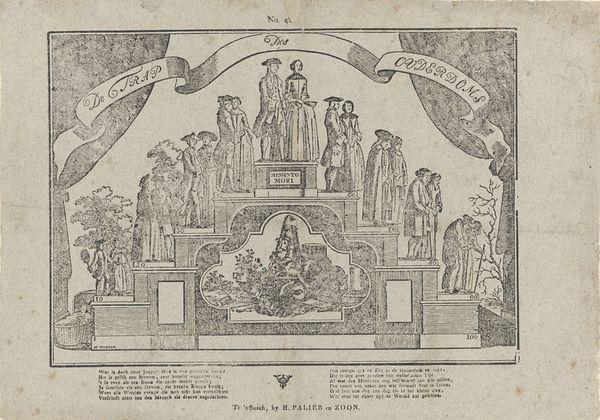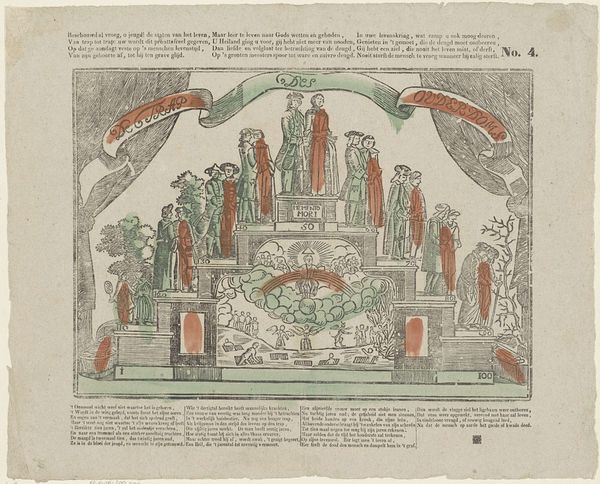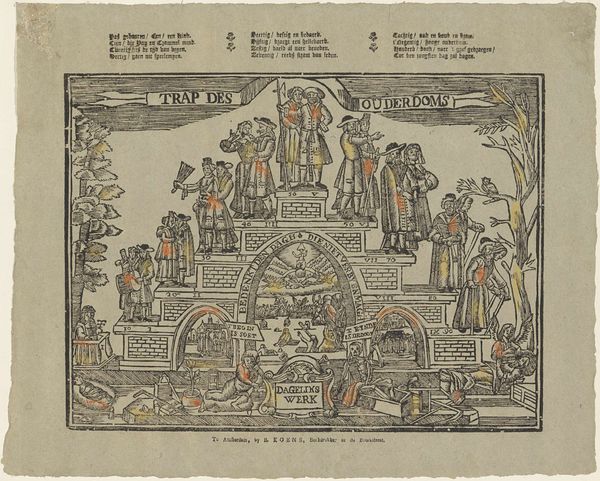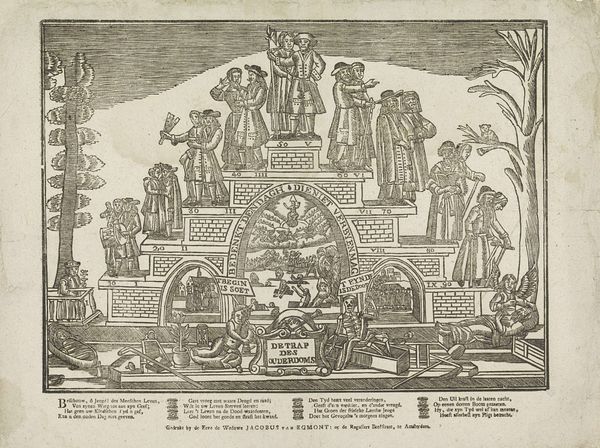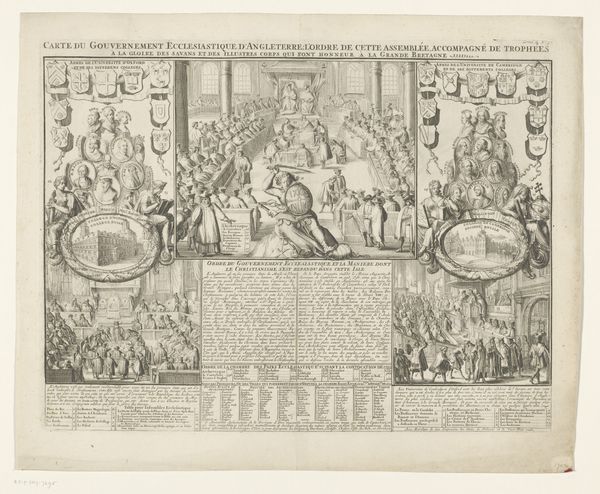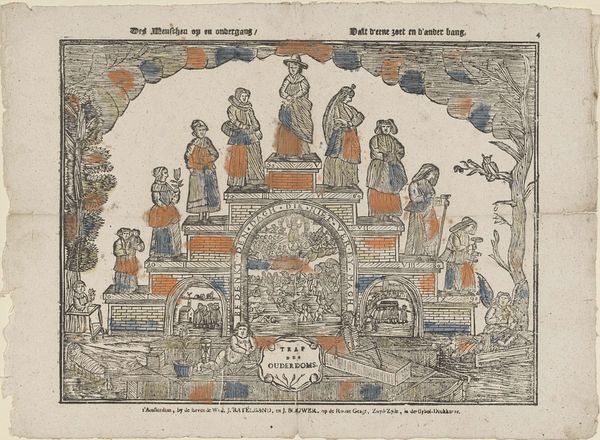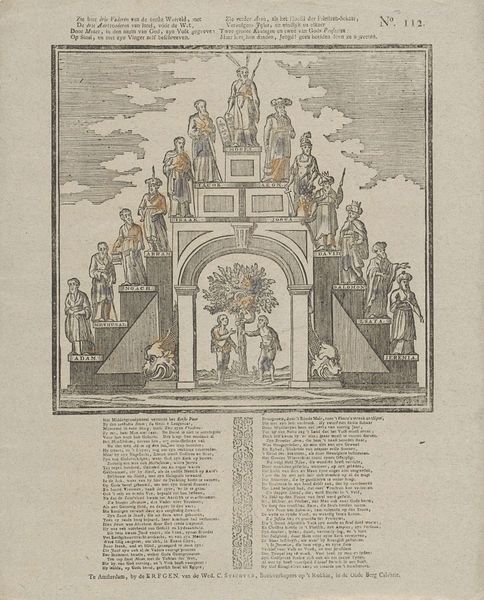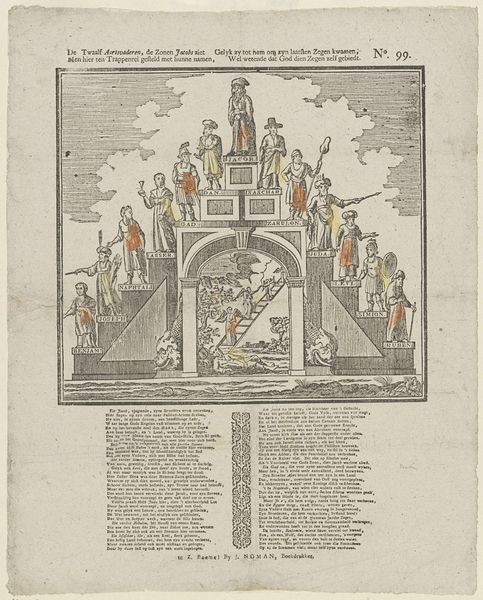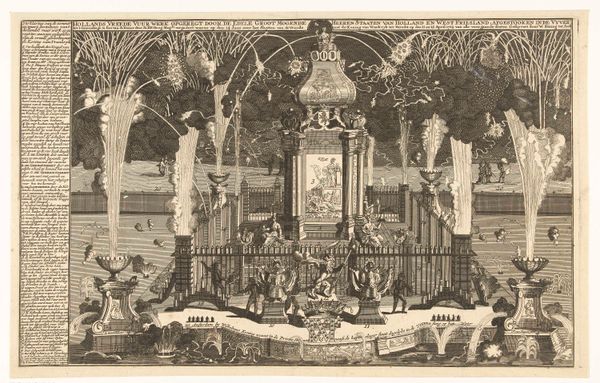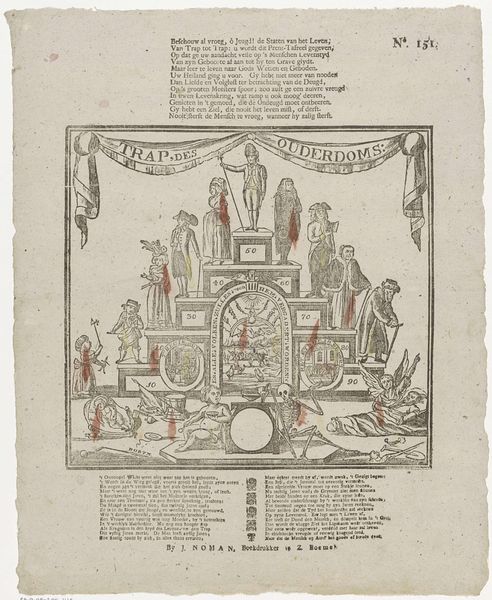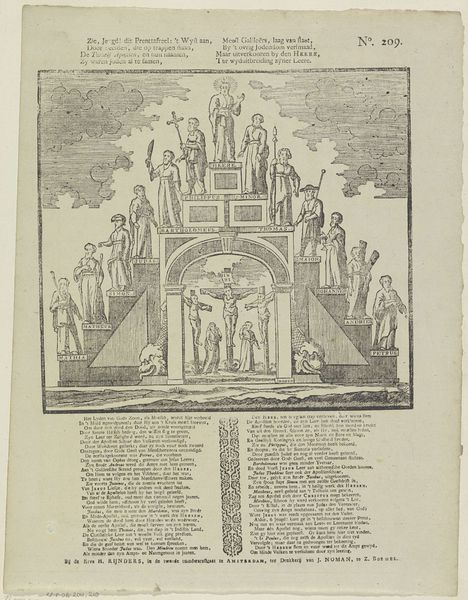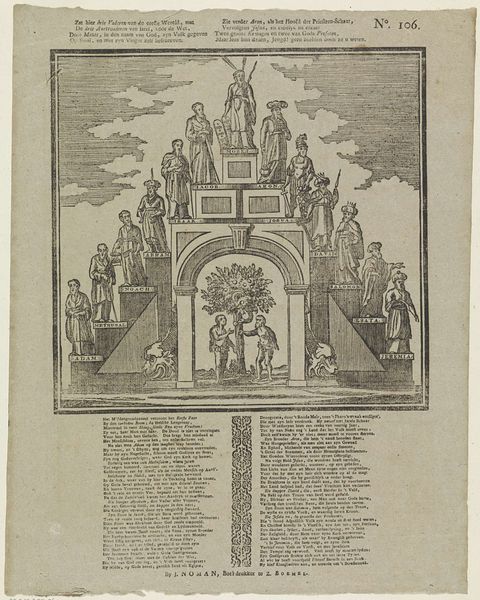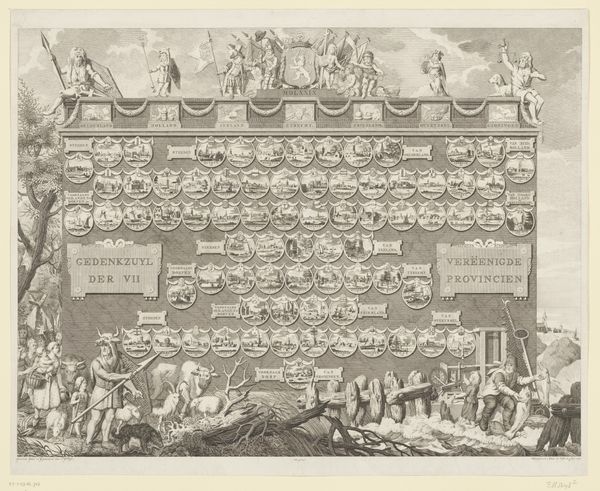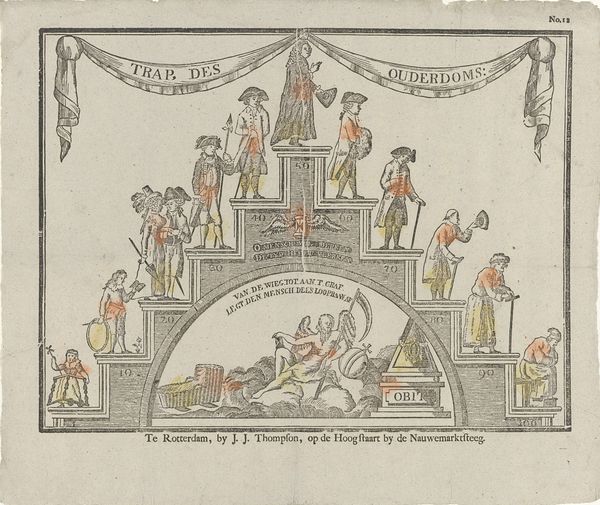
graphic-art, print, etching, pen, engraving
#
graphic-art
#
allegory
#
pen drawing
#
dutch-golden-age
# print
#
etching
#
old engraving style
#
figuration
#
romanticism
#
line
#
pen
#
history-painting
#
engraving
#
realism
Dimensions: height 330 mm, width 420 mm
Copyright: Rijks Museum: Open Domain
Curator: So, here we have "The Stairway of Old Age," or "De trap des ouderdoms" by Johannes Scheffers, probably created between 1789 and 1826. It’s a fascinating allegorical print employing engraving and etching techniques. Editor: Whoa, that’s a whole lotta life stages playing out. It feels kinda rigid, like a diorama of inevitability. Not exactly subtle, is it? Curator: Indeed. It encapsulates a common theme in art: the stages of life and the contemplation of mortality. Considering its period, this artwork visualizes the era’s social anxieties surrounding aging populations, especially amongst the rising middle classes in urban centers. Editor: Urban angst even back then, huh? I get a sort of detached vibe, watching these tiny people progress—or regress—up and down the steps. And the “Memento Mori” inscribed above the second level—death being a companion, perhaps? Morbid but…expected. Curator: Exactly. "Memento Mori," remember death. This era faced huge societal shifts. Consider it from a Foucauldian lens, the power structures shaping societal perceptions. Death was used to reinforce norms. The placement reinforces those systems and how individuals progressed along life stages—dictating behavior during stages of life in the artwork, the figures exist in harmony with accepted behaviors for that age group in 18th-century society. Editor: Okay, now you've taken a load off. But, you're right; the artist definitely placed a symbolic hierarchy into his staircase that’s for sure socially and religiously prescriptive, huh? I kinda like the little graveyard scene down at the bottom—some cute bleakness at stage one hundred. I bet some found some twisted humor back then with this. Curator: Yes! The depiction, in graphic form, made discussions about the natural process of aging less taboo and even entertaining—offering ways to consider death and dying and how an individual can exist. Editor: Well, Johannes Scheffers, bravo for laying it all out, plain as day and as art. No mystery or surprises there. I like how clearly the end stage is there-- and maybe it offered guidance for how to gracefully, happily proceed through aging, a handbook if you will. Curator: Right, it serves as both a cautionary tale and a form of cultural documentation, sparking questions around societal expectations tied to age.
Comments
No comments
Be the first to comment and join the conversation on the ultimate creative platform.
